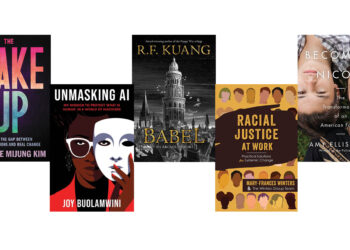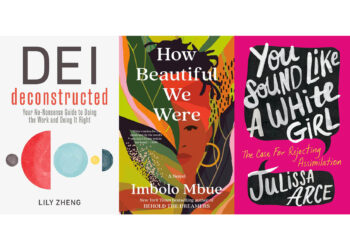
- Image by RedJinn: Back on Board via Flickr
While one would be hard-pressed to find any publisher who does not view digital media as a central strategic concern, we have reached a critical point in the evolution of publishing — henceforth, no one who starts a new publishing company is likely to be thinking of the world of print.
New publishing entities from here on are almost certainly going to be Born Digital.
This is a big shift because print is, well, more than print; it’s also an entire ecosystem that has grown up around print. That means no more looking back to see which legacy customers can be grabbed, no fidelity to old partners or ways of doing business.
Much gets lost in taking this tack, but no matter — there is more to be gained by pursuing a Born Digital strategy without distractions than there is in straddling the old and the new. That is, there’s more to be gained if you are running a start-up; it’s a different story if you are responsible for an ongoing enterprise. Start-ups and established concerns have different strategic objectives and options. Confusing one with the other can lead a publisher down the wrong, even ruinous path.
This is not a matter of choice; it has nothing to do with one’s psychology or orientation. Publishers today are either Born Again or Born Digital depending on whether a company already exists or is a new entity. With few exceptions, companies that already exist seek to be Born Again. They survey their current operations and consider how they can be enhanced and extended through digital media. They would be crazy not to, as they are sitting with a stack of estimable assets, from copyrights to trade relations, not to mention an ongoing flow of cash.
There is great diversity among the Born Again, from using digital technology purely for internal efficiencies to seeking new opportunities among, say, mobile users. But all Born Again publishers hold one strategy in common — the use of information technology to build upon a business that came into being in an earlier era. For the Born Again, IT is not a disruptor (though it can be an annoying expense) but simply an aspect of the environment that must be accommodated and exploited in the ordinary course of events. A Born Again publisher, for example, may have started out in the print world, selling journal subscriptions to libraries. But today that publisher is entirely digital — and has a business model based on selling subscriptions to libraries. Where’s the disruption?
Artisan publishing is an exception to the Born Again rule. A small number of publishers resist the temptations of digital tech and concentrate on hand-crafted books, handsome print editions, and the servicing of niche markets. One entrepreneur I know has been buying up the print rights to database products. The sellers see no future in print, choosing to focus on electronic manifestations. The sellers are right: there is no future in print; there is a present. This entrepreneur, on the other hand, continues to find a market for print and makes a handsome income out of what others deem to be a dying business. This is instructive, as it is easy to fall into the trap of believing that the only way to make money is to be the next Google or Apple. Wealth is created by human ingenuity, not by technology.
Born Digital publishers, on the other hand, seek disruption as a matter of course. What can they do that will tie up legacy publishers pursuing their Born Again strategies? A typical knot-tying tactic is to develop innovative and unexpected pricing schemes, as legacy publishers will be challenged to match them. This is already having a dramatic effect in children’s publishing, where inexpensive apps for the iPad are changing consumer perceptions of just what a children’s illustrated book can be and what it should cost. I am waiting to see an upstart challenge established publishers in clinical medicine by publishing low-cost videos of various procedures. No longer tied to the muli-volume and multi-author texts that dominate the field, what will such publications look like? Where will they be purchased, and at what price?
It is useful to compare the playbooks of the Born Again and the Born Digital publishers:
- Identifying a new market. While Born Again publishers pay lip service to the idea of finding a new market, for the Born Digital, a new market is essential, as it puts them beyond the reach of the established and powerful marketing capabilities of the Born Again. In scholarly communications, one form this takes is the identification of new sources of purchasing power adjacent to legacy purchasers. For example, a Born Again publisher may concentrate on selling materials to academic libraries, while a Born Digital publisher may seek to cultivate faculty as customers.
- Thinking globally. Although this is not a new outlook for journals publishers, many book publishers continue to operate on a national basis. This requires them to find a sufficient audience in their own territory, whereas a global program can bring in customers from many areas, thus making it easier to get to breakeven. Both Born Again and Born Digital publishers alike pursue global strategies today, but the Born Digital publisher has the advantage, as its global strategy is unimpeded by relationships forged in the print era.
- Selling direct. The print world is full of intermediaries, from wholesalers to libraries, that stand between a publisher and the end-user or reader. These intermediaries provide an essential role — for print. But with low-cost digital distribution, disintermediation becomes possible. It’s much harder for a Born Again publisher to sell direct, as direct sales put a publisher into conflict with established distribution channels. A Born Digital publisher, on the other hand, has no legacy customers and thus no conflict.
- Using pricing to disrupt legacy expectations. As noted above, aggressive pricing can hamstring larger and better-resourced established publishers regardless of how forcefully they are pursuing their Born Again strategy. Born Again publishers typically try to charge as much as the market will bear, but Born Digital publishers will often charge the minimum necessary in order to build market share. A strategy based on price works best in direct-to-consumer markets.
- Identifying new fields. This is an editorial issue: What are the growing areas to work in? Some fields are well-established and not likely to make room for newcomers. New fields may also be small and not deliver the return on investment that the Born Again publisher requires. But for the Born Digital publisher, all the negatives associated with a new field are transformed into positives, as there is not likely to be competition from established publishers.
- Investing in print infrastructure. Instructive is the example of Born Digital OR Books, founded by two veterans of trade publishing. OR (named for founders John Oakes and Colin Robinson) uses digital technology to bring books to market rapidly and has a network of suppliers for print on demand, but when an OR title gets hot and can benefit from the legacy distribution channels of trade publishing, the company licenses rights to established trade houses.
- Sizing the organization. Born Digital publishers try to stay as small and lean as possible, as this gives them flexibility and the ability to underprice established publishers. When Born Again publishers attempt to attack their cost structure, they often fail, as they may cut out essential services that their legacy customers have come to expect from them.
It is common for the Born Again and the Born Digital to stand on opposite sides of the fence and throw stones at one another. The Born Again publisher accuses the Born Digital of having an insufficient regard, say, for peer review or notes the sometimes shaky finances of start-up companies; the Born Digital publisher accuses the Born Again of every evil in the world and insists that that there is a march of history and that they, the Born Digital, are in the vanguard. We have seen this fight break out in the posts and comments on the Scholarly Kitchen. These arguments are pointless because one party cannot become the other; the Born Digital cannot become Born Again, a cat cannot become a dog. An organization’s strategy is always based in the particulars of its business, and a company cannot be both already in existence and a start-up at the same time.
New publishers now pay little regard to print because the print world is mature and is characterized by consolidation and market-domination strategies. To play in that world requires scale and established brands. Having neither scale nor established brands, new publishers work with what they can get their hands on. The virtue of a Born Digital strategy for a new entity is that it can address markets that established publishers cannot easily reach. What remains to be seen is how long it will take for new markets to become mainstream.
Discussion
10 Thoughts on "Year One: The Born Digital Publisher"
Insightful comments, but I hope there might be an alternative term to use instead of “Born Again.” Has a bit of a religious implication,
unintentionally excluding some of us.
I suggest Born Digital vs. Becoming Digital. Although “Born Again” has more punch — Joe is a great writer, and knows how to get our attention with a grabber like that — it also has a then-vs.-now implication that is not characteristic of many of the legacy publishers Joe is talking about (outside of reference and STM). The Becoming Digital publishers typically still rely on print for the majority of their revenue, and most of them, in their heart of hearts, expect to do so (or hope to) for the forseeable future. Born Digital publishers are the opposite: print (usually in the form of POD) is a necessary evil, and the sooner they don’t have to bother with it, the better. Joe’s example of OR is right on: okay, we’ll do POD if and when we need to, but if big-time print is necessary, let somebody else do it.
Great post, Joe. To reinforce your point (not that I want to magnify the fear factor for established publishers . . . well, okay, maybe I do), this is a pattern seen throughout many, even most, industries. I’m such an old timer, I remember when _Google_ was the new kid on the block. 😉 Not to mention Microsoft. On a more positive note, a hundred years ago, IBM (then CPT, I think) was the newbie; they’ve been through near-death experiences since then and have mostly managed to remake themselves. Of course lots of newbies (most) never make it, but some do — because of just the dynamics you cite. This is exactly why Microsoft couldn’t do what Google did. And why Facebook scares Google.
For the foreseeable future it might be best to think of digital as a niche in progress. That makes it ideal for start ups. Nobody knows where the market is.



